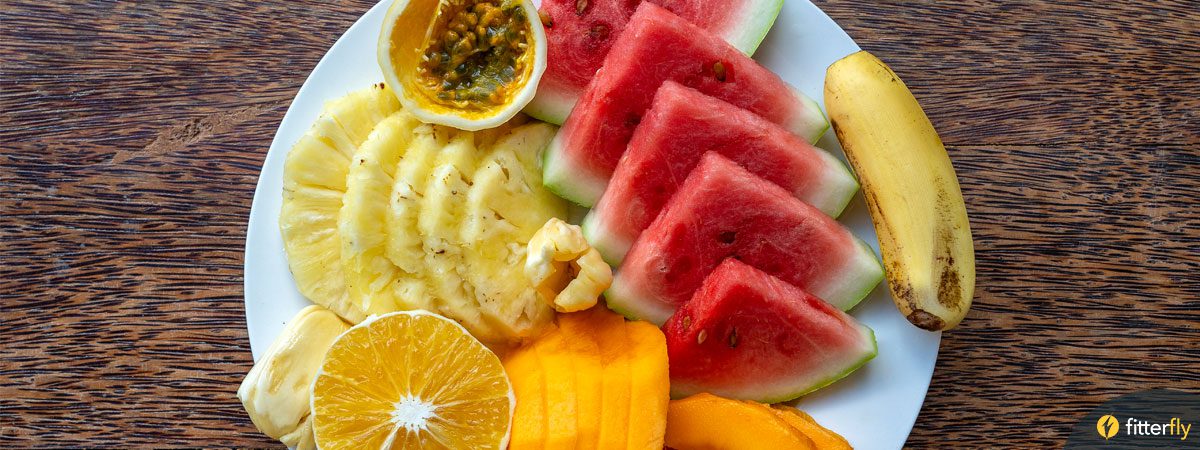How to Make a Healthy Salad – Dos & Don’ts

Salads are the go-to when we think of eating healthy – whether at home or at a restaurant. Yes, a good salad is an excellent way to get more fruits and vegetables into your diet. But who likes to eat a bowl of dry greens every day? To stay on track with this ‘healthy habit’ we top our greens with additives that tantalise the taste buds! And that’s where we go wrong.
This article covers the common ways in which we ruin healthy salads with easy tips to fix these mistakes.
5 Common mistakes that make a ‘healthy’ salad not-so-healthy:
1. Using store-bought dressing:
“Eating salad alone can be very dry. Salad dressings and vinaigrettes pop the flavour and marry all the components of your salad together. As a thumb rule, don’t dump mayonnaise or unhealthy dressing as these are full of fat and sugar, adding tons of unwanted calories. Instead, you can add healthier homemade salad dressings”, said Ms Shilpa Joshi, Head – Metabolic Nutrition, Fitterfly Healthtech Pvt Ltd.
How to fix it:
Here’s how to make your own healthy and tasty salad dressing at home:
- Extra Virgin Olive oil is the perfect accompaniment with your salad. It is a source of unsaturated fat (good fat) and rich in micronutrients.
- Flavourful Koshimbir tadka is made in almost all the Maharashtrian households during summer. Heat ghee or oil in a small tadka pan on medium heat, add the mustard seeds and red chilli. Let it splutter. Switch off the flame. Add the curry leaves once it crackles. Pour this Koshimibir tadka over the salad and mix well.
- Use raita as a salad dressing! The basic version of this super customizable and versatile recipe can be used on any hearty salad like the vegan Caesar salad.
- The homemade honey-mustard dressing is a go-to dressing when making an irresistible salad. “If you are living with diabetes, you can swap honey with curd, making it a curd mustard dressing”, added Shilpa.
- Homemade pesto dressing is made from extra virgin olive oil (so no trans fat), basil leaves, and garlic. Shilpa said, “This dressing is high in fat, so use it in moderation if you have diabetes or are trying to lose weight.”
- Add Balsamic vinegar and olive oil to your salad to give it a fresh and lively taste! Use oregano, thyme, salt and pepper for the added flavours.
2. Drenching your salad with too much dressing:
Here’s where most people go wrong – they think more dressing means more flavour. But a salad drenched with oil, mayonnaise or any other dressing is a sure-fire way to add up the calories.
Secondly, going overboard with commercially available salad dressings can quickly turn a healthy salad into a high-calorie meal. Here’s how many calories you’ll find in a 2-tablespoon (30-gram) serving of readily available salad dressings:
- Thousand Island dressing: 114 calories
- Caesar dressing: 163 calories
- Chipotle ranch dressing: 170 calories
- Ranch dressing: 129 calories
- Blue cheese dressing: 145 calories
How to fix it:
Here are a few tips:
- If you’ve accidentally poured too much dressing, try throwing in more greens to correct the ratio.
- Forgo the salad dressing, instead squeeze some fresh lemon or use any of the homemade dressing recipes mentioned above.
- Ask for the dressing to be served on the side when you order a salad at a restaurant. You’ll be amazed at how many calories you can save!
- Avoid dumping the sauce right on top of your salad. For one, you might add too much dressing. And two, the dressing won’t be evenly distributed. Instead, coat the bowl with the dressing in which you will serve it and add, then toss the salad in the bowl so that the dressing can evenly coat the greens.
3. Going overboard with cheese:
Yes, it is true that cheese is an excellent source of calcium and protein, so it can be part of a healthy salad. But, wait! It’s also loaded with sodium, saturated fat, and calories.
How to fix it:
So, if you love cheese, go easy on how much cheese you’re using. Opt for dry cheese like Parmesan, or add some reduced-fat cheese. Try experimenting with Indian cottage cheese (paneer) or tofu – for a similar or even better taste!
4. Adding fried toppings:
Crunchy toppings like croutons, fried wontons, fried chicken tenders, or crispy sesame sticks can quickly negate your healthy lunch intentions. All of these are deep-fried, so you get a lot of extra fat there.
How to fix it:
Add a tablespoon of peanuts, fresh roasted sesame seeds, chopped walnuts or flax seeds to maintain the crunchy and delicious taste of your salad. They are loaded with omega-3 fatty acids–good for your brain and eyes, plus they’ve got fiber that aids in weight loss.
5. Sticking with the usual base like iceberg lettuce:
Although iceberg lettuce has a nice crunch, adding a variety of other greens and vegetables will give you multiple health benefits, add flavour and texture to your salad. On the other hand, lettuce has almost no nutritional value beyond being a water source—there aren’t many vitamins and not much fiber.
How to fix it:
Experiment with other greens like cabbage, kale, spinach, red cabbage, Chinese cabbage, bell peppers, cucumber, tomatoes, broccoli, cauliflower, carrots, zucchini, mushrooms, beans and lentils. It will add flavour, colour, nutrients, crunch and vibrance to your otherwise dull salad.
A salad is a perfect choice if you are looking for a low-calorie meal or a side dish to enjoy at home or a restaurant. But piling on the wrong items can negate its benefits. Dress your salad smartly, experiment with new bases and beware of unhealthy salad toppings.
And, if you are trying to lose or maintain weight, it would be best to consult our experts from Fitterfly’s Weight Management Program – Reset23. To know more about Reset23, visit https://www.fitterfly.com/reset23 or speak to our counsellors on 022 48971077 (Ext -2).
This blog provides general information for educational and informational purposes only and shouldn't be seen as professional advice.


 References
References









